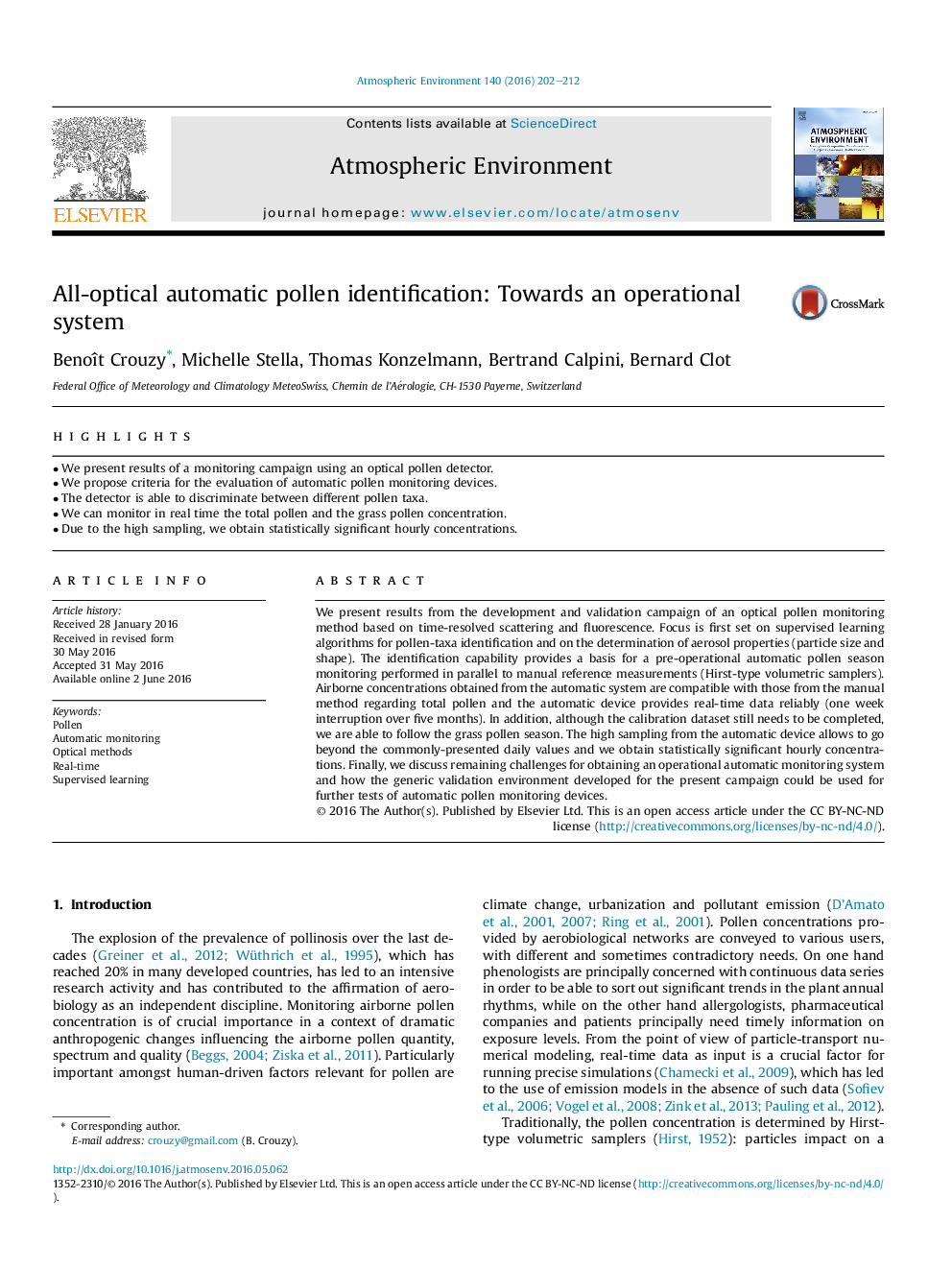| کد مقاله | کد نشریه | سال انتشار | مقاله انگلیسی | نسخه تمام متن |
|---|---|---|---|---|
| 6336175 | 1620334 | 2016 | 11 صفحه PDF | دانلود رایگان |
عنوان انگلیسی مقاله ISI
All-optical automatic pollen identification: Towards an operational system
ترجمه فارسی عنوان
شناسایی گرما: به سمت یک سیستم عملیاتی
دانلود مقاله + سفارش ترجمه
دانلود مقاله ISI انگلیسی
رایگان برای ایرانیان
کلمات کلیدی
گرده، نظارت خودکار، روش های نوری، به موقع، نظارت بر یادگیری،
ترجمه چکیده
ما نتایج حاصل از کمپین توسعه و اعتبار سنجی یک روش نظارت بر گرده افشانی بر اساس پراکندگی زمان حل و فلورسانس ارائه می کنیم. تمرکز اول برای الگوریتم های یادگیری نظارت شده برای شناسایی گرده و تاکسون و تعیین خواص اسپری (اندازه ذرات و شکل) تنظیم می شود. قابلیت شناسایی پایه ای برای نظارت فصل فصل گرما اتوماتیک قبل از عملیاتی است که به صورت موازی با اندازه گیری های مرجع دستی (نمونه های حجمی هشت) انجام می شود. غلظت هوادهی به دست آمده از سیستم اتوماتیک با آنهایی که از روش دستی برای کل گرده استفاده می کنند سازگار است و دستگاه اتوماتیک داده های زمان واقعی را به طور قابل اعتماد (وقفه یک هفته ای بیش از پنج ماه) را فراهم می کند. علاوه بر این، اگرچه مجموعه داده های کالیبراسیون هنوز باید تکمیل شود، ما می توانیم فصل گرده علف را دنبال کنیم. نمونه گیری بالا از دستگاه خودکار اجازه می دهد تا فراتر از مقادیر روزانه ارائه شده به طور معمول و غلظت ساعت در مقیاس رسمی را بدست آوریم. در نهایت ما چالش های باقیمانده برای به دست آوردن یک سیستم نظارت بر عملیات اتوماتیک و چگونگی ایجاد محیط اعتبارسنجی عمومی برای کمپین کنونی را می توان برای آزمایش های بیشتر دستگاه های مانیتورینگ گرما استفاده کرد.
موضوعات مرتبط
مهندسی و علوم پایه
علوم زمین و سیارات
علم هواشناسی
چکیده انگلیسی
We present results from the development and validation campaign of an optical pollen monitoring method based on time-resolved scattering and fluorescence. Focus is first set on supervised learning algorithms for pollen-taxa identification and on the determination of aerosol properties (particle size and shape). The identification capability provides a basis for a pre-operational automatic pollen season monitoring performed in parallel to manual reference measurements (Hirst-type volumetric samplers). Airborne concentrations obtained from the automatic system are compatible with those from the manual method regarding total pollen and the automatic device provides real-time data reliably (one week interruption over five months). In addition, although the calibration dataset still needs to be completed, we are able to follow the grass pollen season. The high sampling from the automatic device allows to go beyond the commonly-presented daily values and we obtain statistically significant hourly concentrations. Finally, we discuss remaining challenges for obtaining an operational automatic monitoring system and how the generic validation environment developed for the present campaign could be used for further tests of automatic pollen monitoring devices.
ناشر
Database: Elsevier - ScienceDirect (ساینس دایرکت)
Journal: Atmospheric Environment - Volume 140, September 2016, Pages 202-212
Journal: Atmospheric Environment - Volume 140, September 2016, Pages 202-212
نویسندگان
Benoît Crouzy, Michelle Stella, Thomas Konzelmann, Bertrand Calpini, Bernard Clot,
